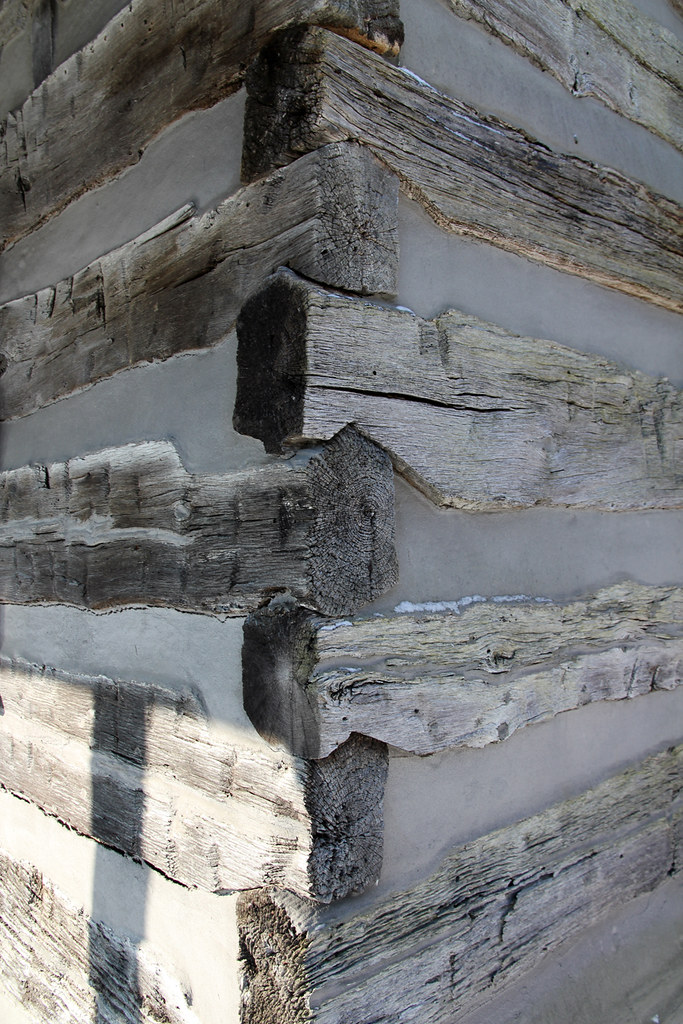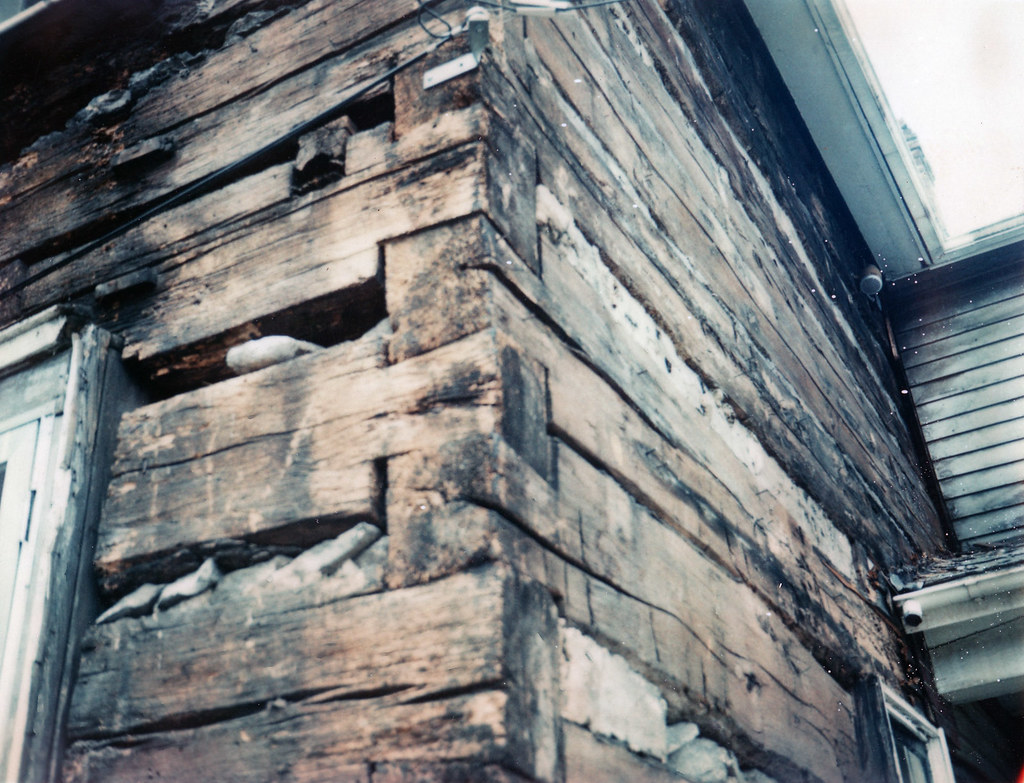 |
| Standard steeple notching in South Charleston, Ohio. |
If Weslager's thesis is correct; and Swedes and Germans introduced log construction to the English and Scotch-Irish, who carried it westward; one would expect to find a great variety of notching types in regions settled by the latter populations. But this isn't so. Those who adopted log construction, it seems, adopted only its simplest techniques. No Scotsman erected a replica of a Swedish parstue, with meddrag and full-dovetail notching. In America, myriad architectural traditions blended into what Donald Hutslar labels "an eclectic nonstyle."
In Ohio, two types of notching — steeple and half-dovetail — predominate. Though steeple notching remained popular throughout the 19th century, the half-dovetail notch was seldom used during the century's first two decades. Ohio's earliest extant half-dovetailed structure is, I believe, the Benjamin Iddings House, built about 1804 in Newton Township, Miami County. The 1811 Gebhart Tavern, in Miamisburg, may be the state's only full-dovetailed building. (Though I've heard reports of other full-dovetailed structures in Ohio, I haven't confirmed them.)
 |
| Miamisburg's Gebhart Tavern is constructed of full-dovetailed logs. Photo by Jackie Zelinka (?), late 1970s, from the Donald Hutslar collection; used courtesy of Jean Hutslar. |
 |
| Half-dovetail notching in Arnold, Ohio. |
The varieties of notching associated with round-log construction are, as expected, nearly nonexistent in Ohio; cabins, and the features unique to them, have disappeared from the landscape. Square-notched buildings lie scattered across the state, primarily in late-settled regions.
 |
| Square notching. This residence, built about 1824, stands in London, Ohio. |
1) In the 18th and 19th centuries, builders likely applied the word "saddle" — instead of "steeple" — to this method of notching. Donald Hutslar discusses the philological confusion surrounding "steeple notch" (and other terms) in The Architecture of Migration.
2) Typically, notching prevents logs from slipping sideways if pushed. Friction between stacked logs is often sufficient to avert collapse.

No comments:
Post a Comment